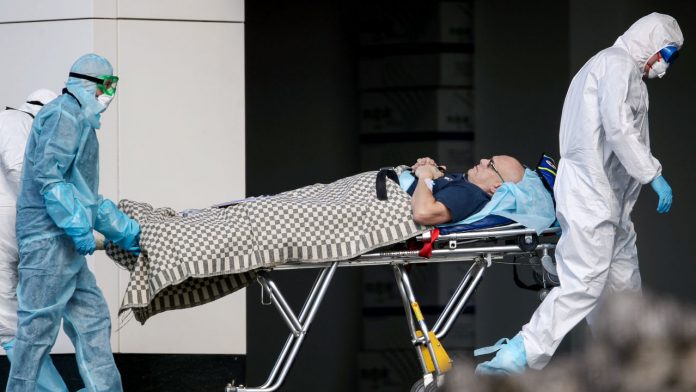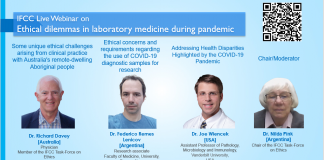
Science’s COVID-19 reporting is supported by the Pulitzer Center.
In January, one of the first publications on those sickened by the novel coronavirus in Wuhan, China, reported that three out of every four hospitalized patients were male. Data from around the world have since confirmed that men face a greater risk of severe illness and death from COVID-19 than women and that children are largely spared. Now, scientists investigating how the virus does its deadly work have zeroed in on a possible reason: Androgens—male hormones such as testosterone—appear to boost the virus’ ability to get inside cells.
A constellation of emerging data supports this idea, including COVID-19 outcomes in men with prostate cancer and lab studies of how androgens regulate key genes. And preliminary observations from Spain suggest that a disproportionate number of men with male pattern baldness—which is linked to a powerful androgen—end up in hospitals with COVID-19. Researchers are rushing to test already approved drugs that block androgens’ effects, deploying them early in infection in hopes of slowing the virus and buying time for the immune system to beat it back.
“Everybody is chasing a link between androgens … and the outcome of COVID-19,” says Howard Soule, executive vice president at the Prostate Cancer Foundation, who on 13 May ran a Zoom call presenting the newest research that drew 600 scientists and physicians. A second call scheduled for today will discuss incipient clinical trials.
Epidemiological data from around the world have confirmed the early reports of male vulnerability. In Lombardy in Italy, for example, men comprised 82% of 1591 patients admitted to intensive care units (ICUs) from 20 February to 18 March, according to a JAMA paper. And male mortality exceeded that of women in every adult age group in another JAMA study of 5700 New York City patients hospitalized with COVID-19.
Now, researchers are on the trail of a mechanism for this male bias—an effort led by prostate cancer researchers, who have a deep acquaintance with androgens.
Christina Jamieson of the University of California (UC), San Diego, who has developed organoids to study prostate cancer, recalls that she was in a Zoom meeting honing ideas on how to link her research to COVID-19 when her sister, also a UC San Diego scientist, sent her a one-word text. It read: “TMPRSS2.”
It was 16 April, and within minutes Jamieson had found the publication that prompted the text: a Cell paper by Markus Hoffmann of the Leibniz Institute for Primate Research and colleagues. The paper sent a lightning bolt through the prostate research community, because it showed that infection with SARS-CoV-2, the virus that causes COVID-19, relies in part on TMPRSS2, a membrane-bound enzyme. The enzyme cleaves the “spike” protein on the coronavirus’ surface, allowing the virus to fuse with the host cell’s membrane and get inside the cell.
Jamieson and other prostate cancer researchers were familiar with the enzyme, because in about half of all prostate cancers, a TMPRSS2 mutation revs up an oncogene that kicks cell growth into overdrive. In the prostate, TMPRSS2 is produced when male hormones bind to the androgen receptor. “Doing research, it’s like you’re trying to throw an anchor into the vast ocean of possibilities,” Jamieson says. The discovery that TMPRSS2 helps the virus enter cells “felt like the anchor hit ground.”
Researchers haven’t established that androgens control TMPRSS2 in the lung—ground zero for SARS-CoV-2 infection—as they do in the prostate; studies in lung tissue and cells from mice and humans come to conflicting conclusions. But after the Cell paper was published, Andrea Alimonti, head of molecular oncology at Università della Svizzera italiana, strengthened the androgen link by looking at data on more than 42,000 men with prostate cancer in Veneto in Italy. He and colleagues found that patients on androgen-deprivation therapy (ADT)—drugs that slash levels of testosterone—were only one-quarter as likely to contract COVID-19 as men with prostate cancer not on ADT, they reported in the Annals of Oncology (see table, below). Men on ADT were also less likely to be hospitalized and to die, although numbers were small.
Source: sciencemag.org












